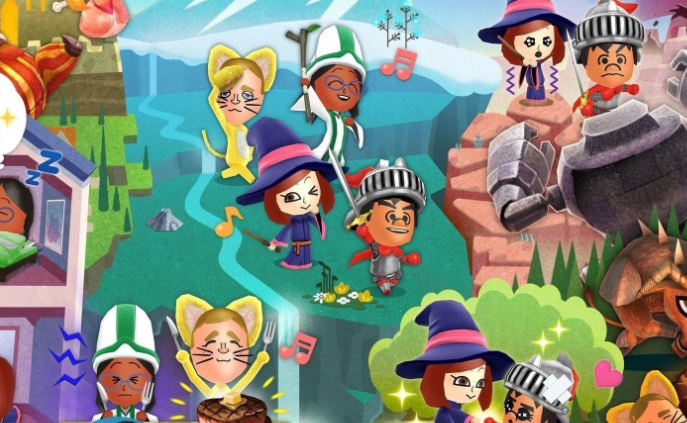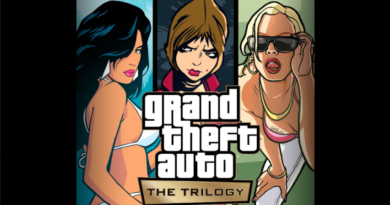Miitopia: The Nintendo Switch Re-release that is Actually Worth It
Back on May 21, Nintendo released the game Miitopia for the Nintendo Switch, another one of their updated re-releases for the Switch. Miitopia for the Nintendo 3DS came out in Japan in 2016, and was released worldwide in 2017. Over the past few months, people have been raving about Miitopia—in fact, it’s one of the few re-releases that hasn’t been overtaken by criticisms.
Miitopia is essentially fanfiction: the game—you insert yourself as the main character in a fantastical adventure, fighting and journeying alongside whomever you choose. The plot and mechanics are planned out in advance, but you have the ability to pick and customize all of the characters and plot progression to your liking. The premise of Miitopia is that people’s faces are being stolen and put onto monsters, so you and your friends travel through drastically different worlds, fighting said monsters and chasing the evil culprit behind the stolen faces. The re-release of Miitopia gives players more than just improved graphics and layout changes; it gives players a variety of new content, most notably the added customization.
In the original release, Miitopia had the original Mii customization options but with added hair and eye colors, just as in one of Nintendo’s other games, Tomodachi Life. The Miitopia re-release, however, has a large variety of added hair styles, bangs styles, and a facial editing feature where you can draw complex faces and facial features onto your Mii.
Another larger feature of the re-release is the adjustment to the pace at which your characters level up. In the 3DS release, each fighting class got stronger in three ways: gaining experience, eating food, and buying armor and weapons. In the Switch release, the classes’ base stats are lower, meaning they are less powerful, and food-based stat upgrades aren’t as impactful as they were in the 3DS release. When it takes longer for a character’s stats to increase, you’re more likely to be at an appropriate level for the fighting gameplay; having too high of a level can make the fighting more boring, lowering the players’ interest or immersion in the game.
A small but convenient additional feature is the “use stats” button when buying new armor for your characters; if you don’t like the new look of the next-best armor, you can keep the look of your original armor while still upgrading it. In the 3DS version of Miitopia, there was a longer, more roundabout way of doing this—the incorporation of this feature makes it much more accessible.
Miitopia is known for being a long game in contrast to its younger audience and simplicity. For the majority of players, the game requires 30 hours or more to finish the main storyline; the post-game content and playing for full completion takes closer to 45-65 hours. Miitopia’s game design can make the gameplay a little boring and routine after a while, but the added features in the Switch release makes the gameplay less repetitive and mind-numbing. Considering the time commitment necessary for both versions of Miitopia, it’s definitely an upgrade for the gameplay to have more new content to keep everything interesting.
Although Nintendo did a proper job on its re-release on Miitopia, the same can’t be said for many of their other re-releases.
Take Super Mario 3D All-Stars for example. Released for the 35th anniversary of the Super Mario franchise, the game includes “revamped” versions of Super Mario 64, Super Mario Sunshine, and Super Mario Galaxy. Although the attention to the classics were appreciated by Nintendo’s fanbase, the game wasn’t received nearly as well as intended. It was a direct translation of the games into the Switch format, with minor control changes and HD graphics. Unfortunately, those were the only changes made. Veteran players were left wanting more; something extra to commemorate the anniversary.
Another notable characteristic of the majority of Nintendo’s re-releases is the blatant disregard for fine-tuning the games. There are multiple spelling and grammatical errors in the dialogue of the Super Mario Galaxy re-release, which puts into question how much time and effort developers put into these re-releases.
This also begs the following questions: why have re-releases been so prevalent on the Switch? Are they worth buying (especially if you own the original game)? Has the series of re-releases just been laziness on Nintendo’s part? To an extent, it makes sense to bring back classics for people to play on consoles that they still have access to. But there have been so many re-releases announced that they are nearly getting priority over new releases.
A good game to examine in order to begin evaluating the worth of re-releases would be Super Mario 3D World. This game was a unique re-release, as it included a bonus-game, Bowser’s Fury, to accompany the actual re-release. However, the features added to the Super Mario 3D World portion were disappointingly small: a few bug fixes and slightly upgraded mobility. One of the advertised new features was the online multiplayer; although, this feature is only accessible if you have a Nintendo Online subscription.
Most mainstream Nintendo Switch games are available for $60, which is expensive for a video game. On top of that, a Nintendo Online subscription is $4 a month (or $20 dollars a year with a longer, upgraded subscription). Is it worth paying that money to get a nearly-unchanged base game and a bonus-game? Possibly, if you don’t own a Wii U and the Wii U version of Super Mario 3D World; otherwise, maybe not.
For Miitopia, however, it is absolutely worth it to get the Switch version. The additions to the game make it more enjoyable and easily playable than before, and this article didn’t even mention all the new features. Even if you own the original game, Miitopia’s re-release is certainly worth buying; it won’t be so similar that you feel like more should’ve been added, but it’ll still carry the essence that made you like the game in the first place.




